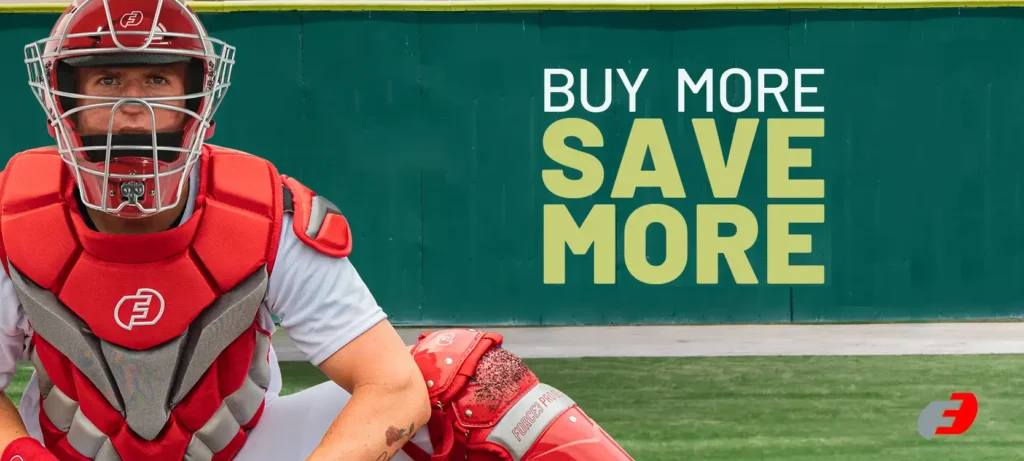Players confidently step onto the field, ready to face whatever comes their way, with their safety equipment serving as the source of this confidence. While safety is often associated with players, it’s equally vital for umpires. Here, we’ll explore the critical aspects of every umpire should be aware of, mainly umpire gear safety standards.
Umpire’s Role
The umpire’s key role is ensuring that games are conducted fairly and safely. Whatever the sport is, if an umpire is involved, he/she would make critical decisions, enforce the game rules, and maintain order on the field. Now, this creates a misjudgment that umpires are not prone to risks. Their proximity to the actions exposes them to potential impact from fast-moving balls to collisions between players, especially when placed behind home plate.
Why proper gear is important for empires?
Given the nature of their responsibilities and the inherent risks, umpires must prioritize their safety through the use of appropriate gear:
1. Protection against the Impacts
Umpires are prone to being hit by deadly wild throws, foul tips and pitched balls. Proper gear, which includes the complete set of chest protectors, helmets, and shin guards, offers vital protection against these impacts.
2. Diminishing the Severity of Injuries
Proper, well-designed umpire protective gear can reduce the severity of injuries that umpires might sustain during a game.
3. Confidence and Focus
Knowing they are well-protected lets umpires focus on their officiating duties without worrying about their safety. This confidence enhances their ability to make accurate calls and manage game situations effectively.
Umpires are essential characters in sports that help bring about fairness in a contest. For an umpire to be adequately protected and safely, the person must know what gear protects him/her from possible on-field hazards. We discuss specific safety standards and requirements on the gear needed by an umpire as follows.
Umpire Gear Safety Standards
Safety standards for umpire gear are paramount in protecting the very lives of umpires and other officials officiating various sports, most notably baseball and softball. The standards have been designed with utmost care to the inherent risks associated with umpiring, such as foul balls, wild pitches, and collisions—all these are dealt with under this subsection:
Helmet
Helmets are typically designed from high-impact materials such as ABC plastic or fibreglass. This kind of material can absorb the shocks from fast-flying baseballs or softballs. Moreover, the equipment must also meet the stringent impact resistance standards to adhere to the recognized safety certifications.
The helmet must sit well on the head without being loose or tight. The face mask must provide a complete facial covering without obstructing visibility and breathability. Additionally, there should be a throat guard to protect against potential throat injuries from the foul balls.
Chest protector
The impact standards of chest protectors feature multiple layers of impact-absorbing foam or gel to disperse and absorb the energy from impacts. It should extend from the collarbone to the abdomen, covering the vital organs and the ribs. Also, it should not hinder mobility and let the player perform comfortably.
Shin Guards
Shin guards are meant to cover the knees and shins. They have hard plastic or metal plates on the front to provide brackets against the impact. Shins guards protect players against foul tips and collisions with the base runners. Shins guards need to be well padded.
Plate Shoes
Plate shoes should have a grippy sole to prevent slipping, especially in wet conditions. They should also provide good arch and ankle support to prevent sprains. Some plate shoes have built-in ankle protection to guard against fouled balls hitting the feet or ankles.
Clothing and Accessories
Proper uniforms include professional-grade shirts, pants, and hats. These contribute to a professional appearance and incorporate moisture-wicking materials for comfort during hot games. Umpires should always wear protective cups to safeguard against potential injury.
While not directly related to physical safety, these accessories are essential for maintaining order and communication during games.
Looking to upgrade your umpire equipment for the upcoming baseball season? Check out our website, where we have a wide selection of high-quality umpire gear for sale at competitive prices.
Compliance with safety standards
To minimize the risks associated with their role on the field, it’s essential to ensure that umpires comply with the safety standards. Let’s understand the essential compliance, maintenance, and knowledge aspects that umpires must prioritize.
- They must conduct a thorough pre-game inspection, including checking for any visible signs of wear and tear, loose straps, or missing parts.
- Pay attention to the helmet’s condition to make sure the shell, padding, and mask are in good condition.
- Inspect the chest protector and look for any signs of compressed or damaged padding.
- Check shin guards for cracks or broken straps, which might compromise leg protection.
- Make sure plate shoes have adequate traction.
In conclusion
Umpires must remain cognizant of the dynamic evolution of safety trends and possess a profound comprehension of the intricate regulations governing the utilization of equipment. These diligent practices are imperative in mitigating potential hazards, guaranteeing the well-being of umpires, and upholding the fundamental integrity of the sport.
